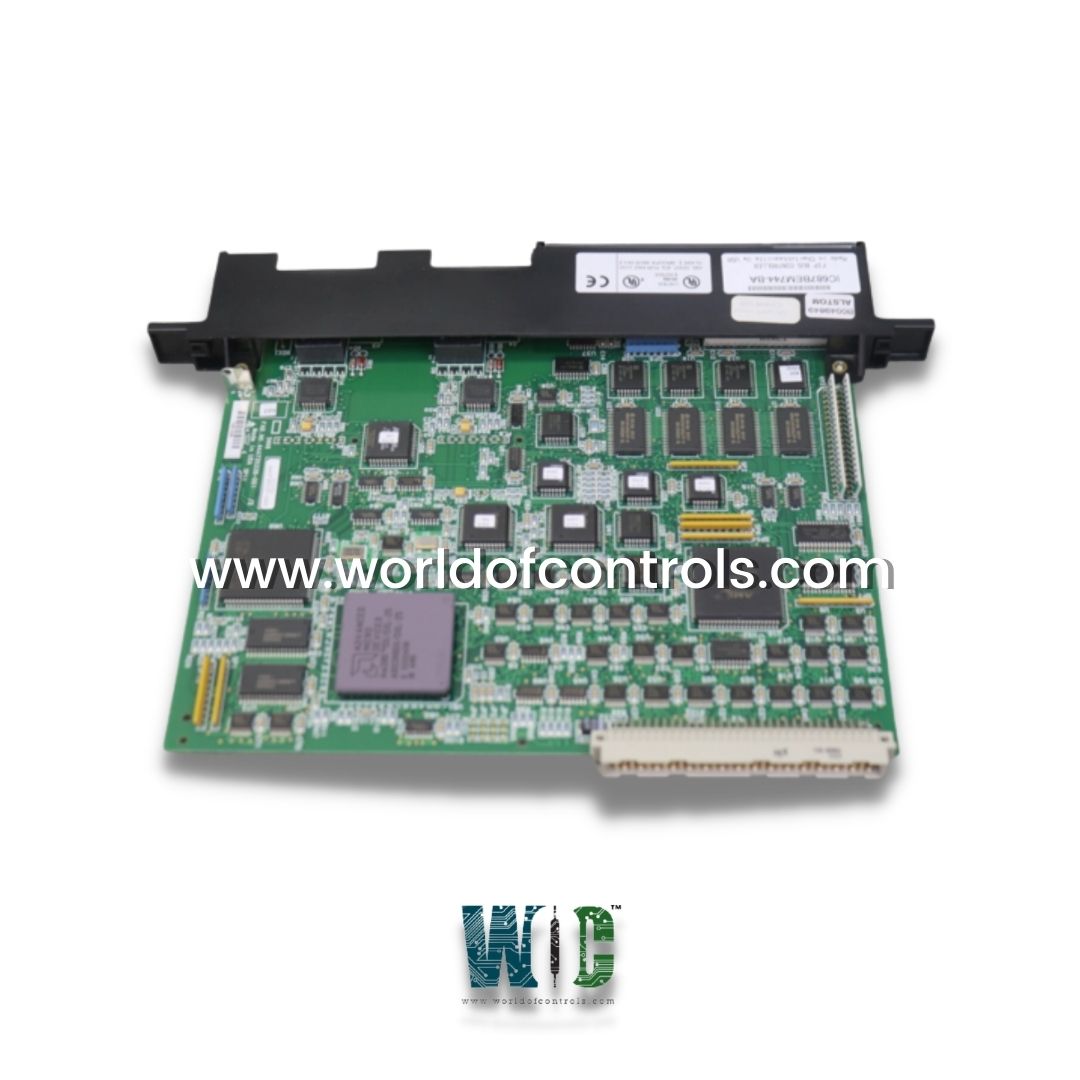SPECIFICATIONS
Part No.: IC687BEM744
Manufacturer: General Electric
Country of Manufacture: United States of America (USA)
LED: 6
Product Type: FIP Bus Controller
Availability: In Stock
Series: IC967 family
Functional Description
IC687BEM744 is an FIP Bus Controller developed by GE. It is part of the Mark I and II control system. It is a specialized FIP Bus Controller designed for the IC967 family of PLCs manufactured by GE Fanuc. This module is part of a series of four compatible FIP Bus Controllers and features a half-slot design, making it ideal for installation in an integrated rack system. Despite its compact size with a half-width faceplate, it offers functionality identical to a full-slot FIP Bus Controller.
Key Features
- Unlike traditional full-slot controllers, this module is equipped with a half-width faceplate, allowing it to fit seamlessly into integrated rack systems while conserving valuable space. Despite its compact form factor, it offers the same level of functionality as a full-slot FIP Bus Controller, making it a highly efficient solution for systems where rack space is limited but full-scale performance is still required.
- The module is tailored for use with a 2.5 MHz WorldFIP network, supporting TCP/IP communications and generic messaging protocols. This enables broad integration with various components and devices within a PLC network, ensuring smooth data exchange and reliable system-wide communication. Its design allows for easy adaptation to different industrial communication requirements, enhancing overall system versatility.
- It’s important to note that while it provides extensive functionality, FIP Bus Controllers like this one cannot be installed in PLC expansion racks within a 90-70 PLC system. However, users can still install up to four FIP Bus Controllers within a single 90-70 PLC system, offering significant configuration flexibility and allowing for advanced system architectures that require multiple network interfaces.
- With its compact design, full-featured communication capabilities, and integration with GE’s reliable PLC families, it stands out as a powerful and space-saving solution for managing WorldFIP communications in industrial control applications.
Front Panel Components
- 6 LEDs: These LEDs provide real-time status indicators, including:
- Module OK: Indicates the overall operational status of the module.
- Bus Arbiter: Shows the status of bus arbitration.
- Carrier Detect Ch. 1: Indicates the presence of a carrier signal on Channel 1.
- Transmit Enable Ch. 1: Shows whether Channel 1 is enabled for transmission.
- Carrier Detect Ch. 2: Indicates the presence of a carrier signal on Channel 2.
- Transmit Enable Ch. 2: Shows whether Channel 2 is enabled for transmission.
- 15-Pin RS-485 Serial Connector: This port facilitates easy connection of a PC to the module for firmware upgrades, allowing for straightforward maintenance and updates.
- Two 9-Pin FIP Fieldbus Connectors: These connectors support redundant bus capabilities, ensuring reliable and continuous network operation by allowing connections to multiple bus lines.
- Restart Button: This button enables the user to restart the module or reload software while simultaneously restarting the module, aiding in troubleshooting and system resets.
Installation and Maintenance
- For optimal performance and safety, it should be installed and removed only when the system power is off.
- Proper handling procedures are essential to prevent damage to the module and ensure stable operation. Never install or remove the module while power is applied to the system.
The WOC team is always available to help you with your Mark I and II requirements. For more information, please contact WOC.
Frequently Asked Questions
What is IC687BEM744?
It is an FIP bus controller developed by GE under IC967 family.
What is the purpose of the 15-pin RS-485 serial connector?
The 15-pin RS-485 serial connector is used to connect a PC for firmware upgrades, facilitating maintenance and updates.
How do the two 9-pin FIP Fieldbus connectors benefit the module?
The two 9-pin FIP Fieldbus connectors support redundant bus capabilities, enhancing network reliability and ensuring continuous operation by allowing connections to multiple bus lines.
What does the restart button do?
The restart button allows the user to restart the module or reload software while simultaneously restarting the module, aiding in troubleshooting and system resets.
